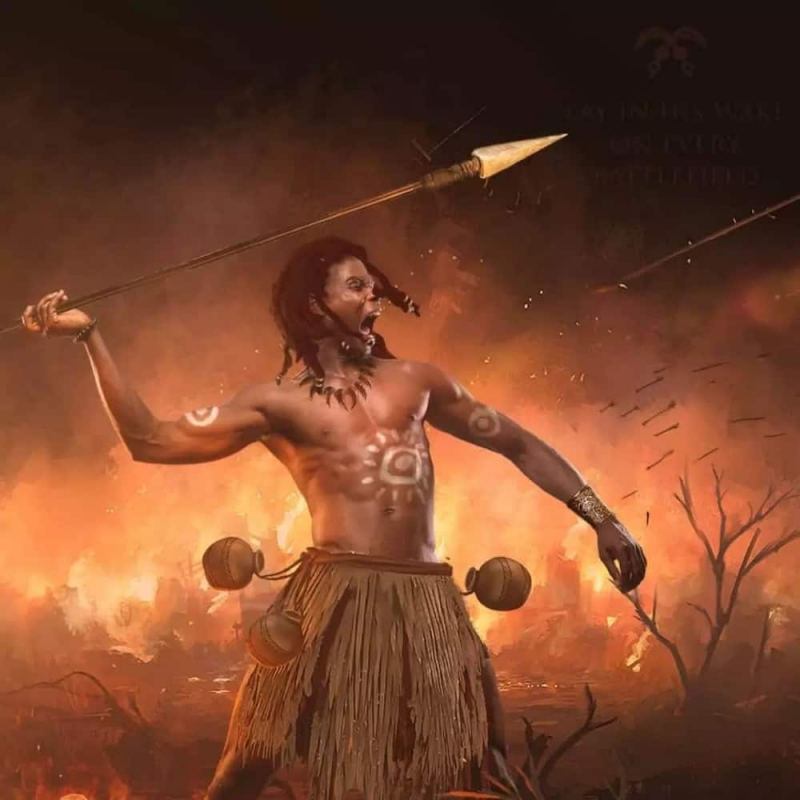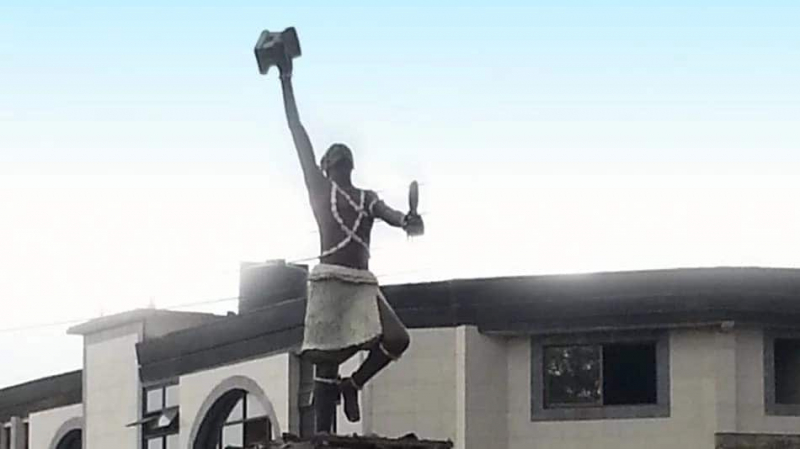Okomfo Anokye
Okomfo Anokye (1655 - 1717 or 1719) was the Ashanti Empire's first priest (Okomfo). Anokye is well-known for his role in the empire's expansion. He is regarded as one of the most important historical figures in Ghana.
Anokye was his adviser and chief priest when Osei Kofi Tutu I succeeded to the throne of the Kumaseman State between c.1680 and c.1695 (exact year unknown; although he was definitely Kumasehene by 1695) to the leadership of the small group of Akan forest states around the city of Kumasi, which were already grouped in a loose military alliance. Tutu and Anokye, who must be considered together, continued their predecessors' expansionist policy, defeating two powerful enemies, the Akan Doma to the northwest and the Denkyera empire to the south.
According to Ashanti historians, the Asante people are descended from the peoples of the ancient Ghana Empire (hence the current name Kwame Nkrumah gave the country), which is said to supplant their martial valour. During the 17th century, the Ashanti conquered large parts of Ghana by overthrowing their powerful overlords, the Denkyira. Okomfo Anokye was essentially a powerful cleric who served to rally the people behind his friend, the king's, cause. Anokye is also said to have planted a dagger in the heart of the Ashanti region, which the Europeans have been unable to remove with any type of technology for over 500 years. Ashanti was one of the few West African countries to achieve battle victories over the British.
To break free from the Denkyira yoke, a powerful unity that transcended the particularism of the Ashanti segments was required, and Anokye used not only the political influence of his priesthood but also the spiritual ties it fostered to transform the loose Ashanti alliance into a "national" union in 1695.
Anokye and Tutu established Ashanti state rituals and customs to counteract the influence of local traditions. They chose Kumasi as the Ashanti capital. They then established a state council of the chiefs of the previously admitted states to the union and suppressed all competing origin traditions. Finally, the Ashanti army was reorganized.
The war with Denkyira (1699-1701) started badly, but when the Denkyira army arrived at Kumasi's gates, Anokye's incantations allegedly caused defections among their generals. The Denkyira hegemony was broken when the Ashanti captured the Dutch deed of rent for Elmina Castle. This gave the empire's traders access to the African coast and immersed them in the commerce and politics of the coastal slave trade.
Following the death of Osei Tutu in 1717, Anokye is said to have returned to Akuapim and died between 1717 and 1719 in the Kumase town of Kyirapatre (aged between 62 and 64). The true cause of his death is unknown, but it is said that he was about to bring the key to death, so no one should cry; if anyone is heard crying, he will never return. After a few days, he was still missing, and the women cried, and he never returned.







